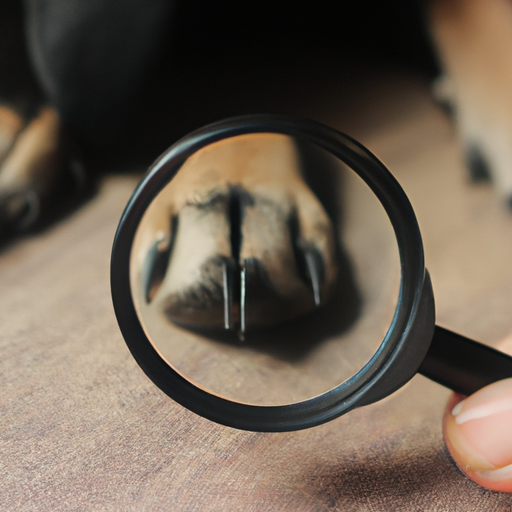Dogs are fascinating creatures with unique features that intrigue many of us. One of these features is the color of their nails. Have you ever wondered, why do dogs have black nails? This article will plunge into this topic, unraveling the science behind it, and addressing all your queries.
Table of Contents
- Understanding Dog’s Nail Anatomy
- Black Nails: Genetics and Breed Influence
- The Link Between Dog’s Health and Nail Color
- Caring for Dogs with Black Nails
- Frequently Asked Questions
Key Takeaways
- The color of a dog’s nails is primarily determined by their genetics.
- Breed plays a significant role in nail color.
- Nail color can sometimes indicate health issues.
- Proper care and grooming are essential for dogs with black nails.
Understanding Dog’s Nail Anatomy
Just like human nails, dog nails are made of keratin, a hard protein. The part of the nail we can see is called the nail plate. The nail bed, which lies beneath the nail plate, contains the nerves, blood vessels, and melanocytes. These melanocytes produce melanin, a pigment responsible for the color of the nails, skin, and hair.
The color of a dog’s nail can range from clear or white to black, depending on the amount and type of melanin present. Dogs with more melanocytes will naturally have darker, or black nails.
A dog’s paw consists of five parts: the claw, digital pads, metacarpal pad, dewclaw, and carpal pad. You can learn more about it here.
Black Nails: Genetics and Breed Influence
The primary reason why dogs have black nails is genetics. The genes they inherit from their parents determine the number of melanocytes produced. Some breeds naturally have black nails due to the high amount of melanin in their bodies. These breeds include the Belgian Malinois, Rottweilers, and Black Labrador Retrievers.
| Breed | Nail Color |
|---|---|
| Belgian Malinois | Black |
| Rottweilers | Black |
| Black Labrador Retrievers | Black |
If you are interested in knowing more about these breeds, you can check the breed profiles on OneTopDog.
The Link Between Dog’s Health and Nail Color
While black nails are typically a genetic trait, a sudden change in nail color can sometimes signal a health issue. For example, a dog with usually light nails developing black spots or stripes could indicate a fungal infection, allergic reaction, or even melanoma. Therefore, it’s essential to monitor any changes in your dog’s nails and seek veterinary advice if you notice anything unusual.
For more information on potential health issues in dogs, visit this page.
Caring for Dogs with Black Nails
Caring for a dog with black nails requires a bit more attention compared to dogs with lighter nails. This is because the quick, the sensitive part of the nail containing blood vessels and nerves, is harder to see in black nails. Accidentally cutting into the quick can cause pain and bleeding.
Here are some tips for trimming black nails:
- Use a bright light to better see the quick.
- Trim a small amount at a time.
- Look for a dark spot in the middle of the nail. This is usually where the quick starts.
Additionally, you can read about some useful grooming tips here.
Frequently Asked Questions
Q1: Is it normal for dogs to have black nails?
A: Yes, it’s perfectly normal for some dogs to have black nails. The color of a dog’s nails is primarily determined by genetics.
Q2: Can the color of a dog’s nails change?
A: Yes, a dog’s nails can change color due to aging, nutritional changes, or health issues. If you notice a sudden change in your dog’s nail color, it’s best to consult a vet.
Q3: Can I trim my dog’s black nails at home?
A: Yes, you can trim your dog’s black nails at home. However, you need to be careful not to cut into the quick, which can cause pain and bleeding.
In conclusion, understanding why dogs have black nails can help you better care for your furry friend. Remember, regular grooming and monitoring for any changes in your dog’s nails are essential for their overall health and well-being.



